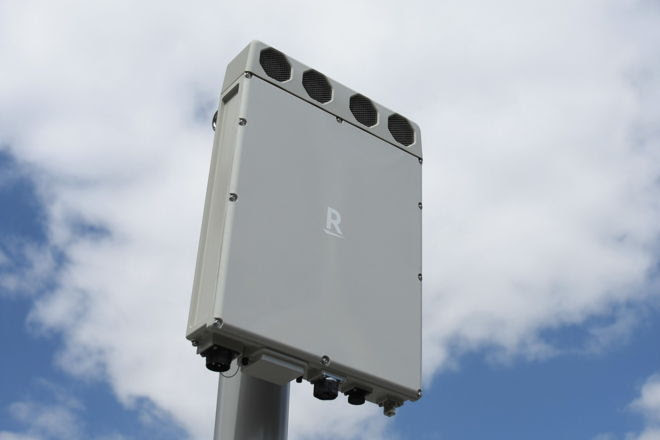Microsoft Linux is the next evolution of the Microsoft desktop operating system, argues Jack Wallen. He explains why this would be a win-win for Microsoft, IT pros, users, and the Linux community.
” data-credit=”Image: Jack Wallen” rel=”noopener noreferrer nofollow”>
Image: Jack Wallen
My esteemed colleague Steven J. Vaughan-Nichols penned an outstanding piece on sister site ZDNet titled Linux-based Windows makes perfect sense in which he discussed Eric S. Raymond’s point of view that we are nearing the last phase of the desktop wars. Vaughan-Nichols posits that the next logical step would be the Windows interface running on top of the Linux kernel.
It makes sense, especially given how hard Microsoft is working on Windows Subsystem for Linux. However, from everything I’ve witnessed over the last few years, I think there’s a conclusion to be drawn that makes even more sense for Microsoft.
SEE: Microsoft Build 2020 Highlights (TechRepublic Premium)
Microsoft Linux: Why it’s the best solution
At one point, the big cash cow for Microsoft was software–Windows and Microsoft Office to be exact. But, as with everything in the tech industry, evolution happens. Tech companies that refuse to evolve fail.
Microsoft gets that, and it has evolved. Case in point: Microsoft Azure. Microsoft’s cloud computing service, as well as AWS and Google Cloud, have been massive driving forces in an ever-changing industry. Azure has become Microsoft’s new world cash cow–so much so the company that has enjoyed a stranglehold on the desktop market has begun to realize there might be better ways to leverage the desktop.
That leverage could easily come by way of Linux, but not the Linux you’re probably thinking of. The Linux that Vaughan-Nichols suggests could be a good stepping stone for Microsoft, but I believe the company needs to make a much bigger leap. I’m talking moon landing-sized leap–one that will make life a lot easier for all involved.
I’m talking about diving deep into the Linux waters. Forget about a version of the desktop with a Windows 10 interface running on the Linux kernel and finally admit that Microsoft Linux might be the best solution for today’s world.
A full-on Linux distribution released by Microsoft would mean less frustration for all involved. Microsoft could shift its development efforts on the Windows 10 desktop to a desktop that would be more stable, dependable, flexible, and proven. Microsoft could select from any number of desktops for its official flavor: GNOME, KDE, Pantheon, Xfce, Mint, Cinnamon… the list goes on and on. Microsoft could use that desktop as is or contribute to it and create something that’s more in-line with what its users are accustomed to.
Development: Microsoft isn’t off the hook
This doesn’t mean Microsoft would be off the hook in terms of development. Microsoft would also want to make major contributions to Wine in order to ensure all of its products work smoothly with the compatibility layer and are rolled into the operating system by default so the end user doesn’t have to do anything extra in order to install Windows applications.
Windows users need Defender
The Microsoft dev teams would also want to port Windows Defender to this new distribution. Wait. What? Am I seriously suggesting that MS Linux would need Windows Defender? Yes, I am. Why?
End users still need protection from phishing scams, malicious URLs, and other types of attacks. The average Windows user might not realize that the combination of Linux and safe usage practices is far more secure than Windows 10 and Windows Defender. So, yeah, porting Windows Defender to Microsoft Linux would be a good step into keeping the user base comfortable.
Those users would very quickly learn what it’s like to work on a desktop computer and not have to deal with the daily frustrations that come with the Windows operating system. Updates are smoother and more trustworthy, it’s secure, and the desktop just makes more sense.
SEE: Everything a Linux admin needs to know about working from the command line (TechRepublic Premium)
Win-win for Microsoft, users, and IT pros
Microsoft has been doing everything in its power to migrate users from the standard client-based software to cloud and other hosted solutions, and its software cash cow has become web-centric and subscription-based. All of those Linux users could still work with Microsoft 365 and any other Software as a Service (SaaS) solution it has to offer–all from the comfort and security of the Linux operating system.
That’s a win-win for Microsoft and consumers because Windows isn’t as much of a headache to deal with (by way of bug hunting and security patching its proprietary solutions), and consumers get a more reliable solution without missing out on anything. If Microsoft plays its cards right, the company could re-theme KDE or just about any Linux desktop in such a way that it’s not all that different from the Windows 10 interface.
Lay this out right, and consumers might not even know the difference–a “Windows 11” would simply be the next evolution of the Microsoft desktop operating system.
Speaking of winning, IT pros would spend less time dealing with viruses, malware, and operating system issues and more time on keeping the network (and the servers powering that network) running and secure.
What about the big box stores?
This is where the rubber meets the road. In order to make this really work, Microsoft would have to completely drop Windows for its flavor of Linux. In that same vein, Microsoft would need to ensure that big box stores stocked PCs complete with Microsoft Linux. There would be no room for half measures–Microsoft would have to go all in to ensure this transition was a success.
Once the big box stores started selling PCs and laptops with Microsoft Linux installed, I predict this initiative would be a huge success for all involved. Microsoft would be seen as finally shipping an operating system worthy of the consumer; the consumer would have a desktop operating system that didn’t deliver as many headaches as it did moments of actual productivity and joy; and the Linux community would finally dominate the desktop.
Microsoft Linux: The time is now
You might think this idea is crazy, but if you really think about it, the evolution of Microsoft Windows is pointing in this direction. Why not bypass the halfway portion of this timeline and jump directly to an end game that spells success for all involved? The time for Microsoft Linux is now.














